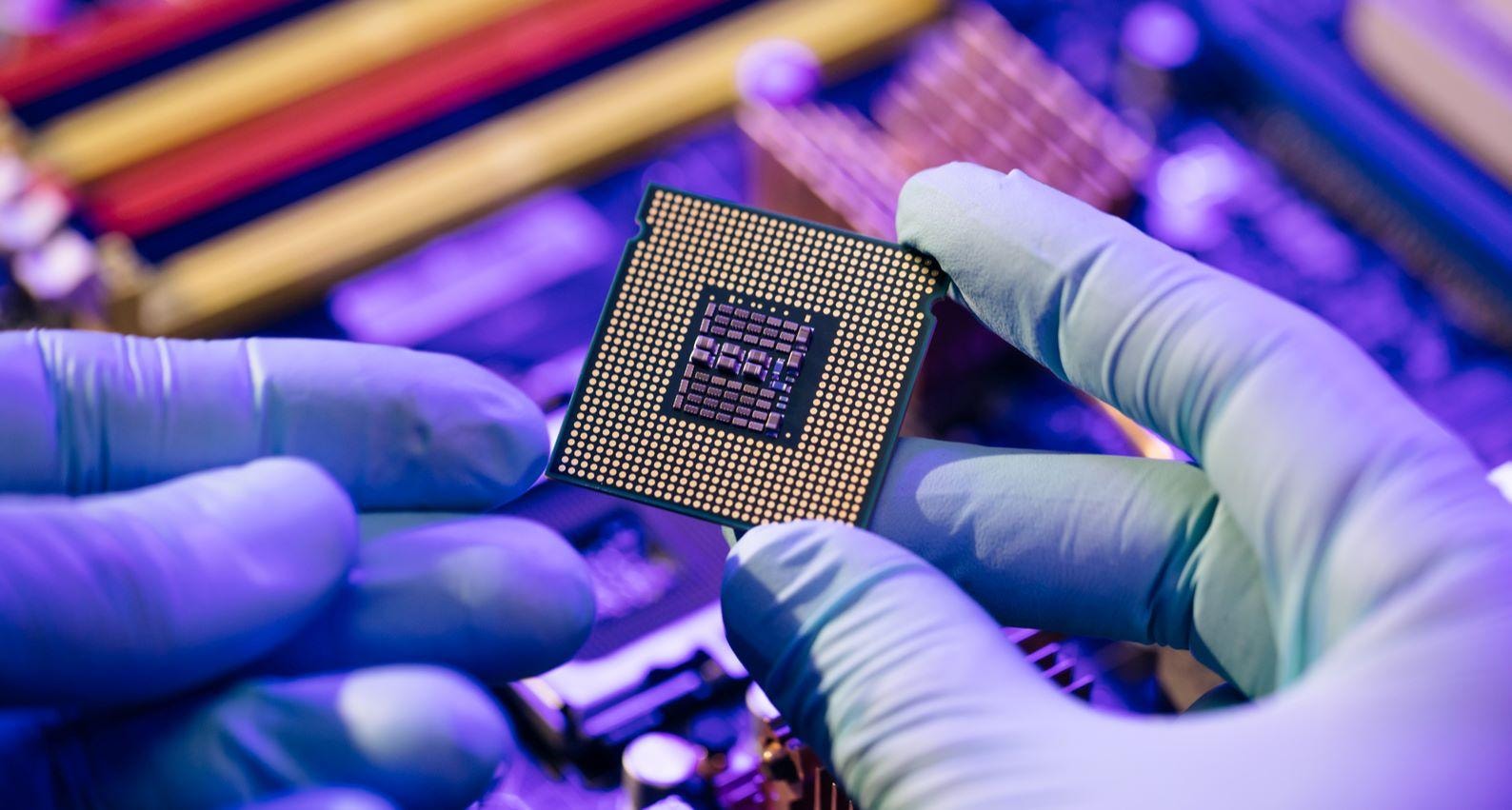Chiplets, solar cells, quantum computing, edge computing, and generative AI are the top technological breakthroughs in 2024 that promise to reshape the future of the world.

According to consulting firm Deloitte, below are the top 5 technological breakthroughs that will not only make their mark in 2024 but also promise to reshape the future of the world.
Semiconductors are now used in almost every modern electronic device. In 2023 alone, nearly 1,000 billion chips were sold globally, equivalent to more than 100 chips for every person on Earth.
However, the semiconductor industry is slowly reaching the limits of Moore's Law, the principle that the density of transistors on an integrated chip doubles every two years.
Today, the smallest transistors are just 2 nanometers across, allowing 50 billion transistors to fit on a chip the size of a fingernail.
To overcome these limitations, chiplets were born. These are small modular chips, combined like building blocks to create more efficient systems.
Unlike traditional monolithic chips, chiplets allow designers to combine and customize components such as processors, memory, and artificial intelligence (AI) engines, optimizing each component independently.
In the automotive industry, dedicated AI chiplets can improve autonomous driving performance, while other chiplets manage battery efficiency. This simplifies system upgrades without redesigning the entire chip.
Chiplets are now expected to revolutionize everything from consumer electronics to AI.
The growing number of data centers and the increasingly widespread application of AI are becoming a threat to the global energy system in the second half of the current decade.
Goldman Sachs estimates that AI data center electricity consumption will reach 200 terawatt hours between 2023 and 2030. This is driving demand for clean energy solutions, and 2024 marks a major turning point in this sector.
Thanks to the mineral perovskite, solar panels can be just one micron thick (about 0.001 mm) and 150 times thinner than silicon panels, while achieving energy efficiency of over 28% compared to 22% for traditional panels.
The material is also thin enough that it could be woven into clothing to charge devices on the go.
Battery technology has also made significant advances, with mass production of sodium-ion batteries offering 10 times faster charging and a lifespan of up to 50,000 charge cycles.
AI has played a key role in optimizing these new battery technologies by continuously monitoring status, predicting failures, and optimizing charging cycles.
These advances break down energy barriers, enabling the expansion of AI applications, cloud computing, and other devices, while reducing operating costs.
Quantum computing has moved from experimental to practical. It is becoming more accessible, thanks to companies offering quantum computing services that reduce the need to buy expensive hardware.
The main difference between quantum computers and classical computers is that quantum computers are not limited to processing data in bits — 0s and 1s. Instead, quantum computers are based on the principles of physics and quantum mechanics, making them incredibly powerful in simulating nature and complex processes like developing new materials.
However, they can also break current encryption systems. The threat of malicious actors collecting encrypted data in the hope of breaking it later with quantum computers is growing and entirely feasible.
In August 2024, the US National Institute of Standards and Technology (NIST) published post-quantum encryption standards that companies should use to develop strategic plans and allocate resources to upgrade their encryption systems. This change is essential to protect digital infrastructure in the quantum era.
Imagine a world where your smartphone, self-driving car, or home security device can process complex data instantly, right at the source. That’s the promise of edge computing: bringing computation closer to where the data is generated, reducing latency, lowering energy costs, and enhancing privacy by minimizing the transmission of sensitive information to distant servers.
Edge computing reduces bandwidth requirements, lowers energy consumption, and saves costs. It also enables new business models.
In 2024, the world witnessed significant breakthroughs in edge computing technology. One of them is the global expansion of 5G networks, which provide low latency speeds of just 5 milliseconds compared to 100 milliseconds for 4G.
The second breakthrough is advances in Edge AI — the rise of smaller-scale AI models that allow complex algorithms to run on devices like mobile devices or self-driving cars.
In early 2024, the first commercial edge computing and AI system went live on the International Space Station (ISS), reducing dependence on central control for data processing.
LLMs have evolved significantly since their emergence in 2023 with OpenAI’s hit ChatGPT. Initially, LLMs were sometimes inaccurate, lengthy, and required a significant recommendation process. By 2024, LLMs had become ubiquitous, reshaping industries.
Among the breakthroughs, the most notable is RAG (retrieval-enhanced generation). This technology combines LLM with real-time data, bases responses on specific information and makes them more reliable.
Multimodal interfaces (combining text with images, audio or video) are also becoming popular. They allow healthcare models to analyze medical images along with patient data for more accurate and comprehensive diagnoses.
Another breakthrough is AI Agents - tools that can autonomously perform tasks without human intervention to achieve set goals. Agents understand their environment, make decisions and complete tasks in a rational manner.
Once just a backend tool, AI is now helping shape strategy, drive automation, enhance customer experiences, and enable innovation.
TB (summary)